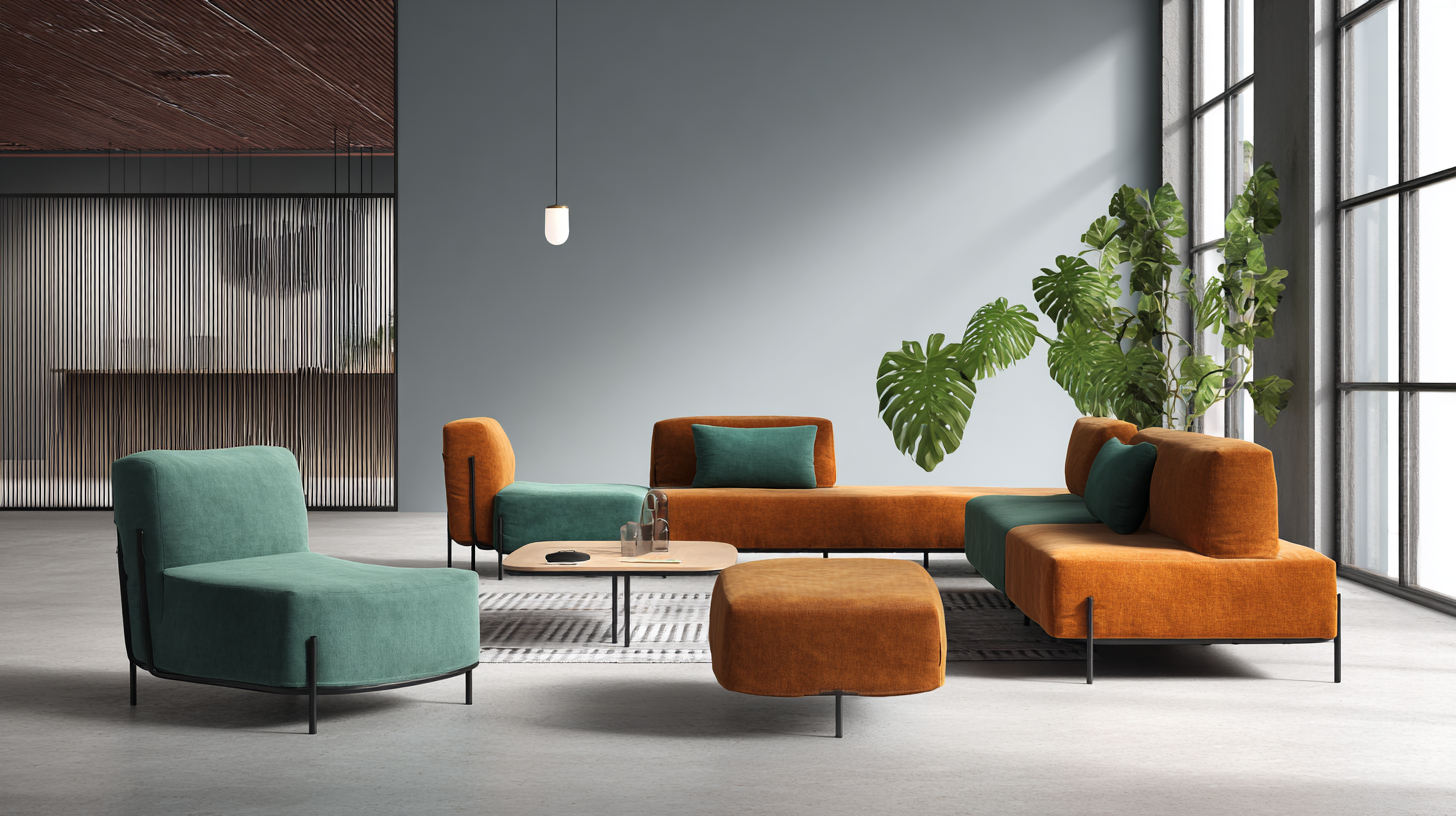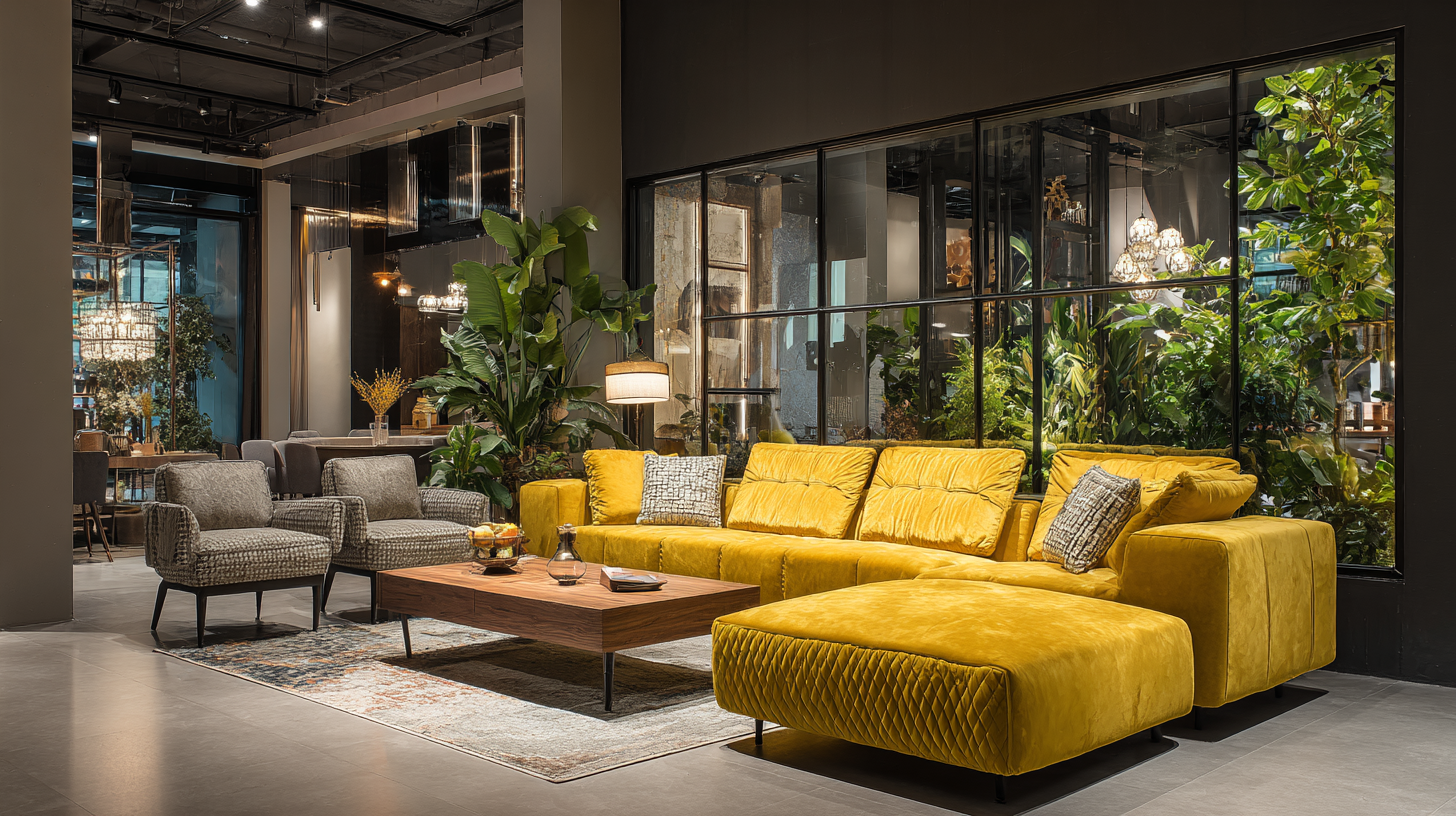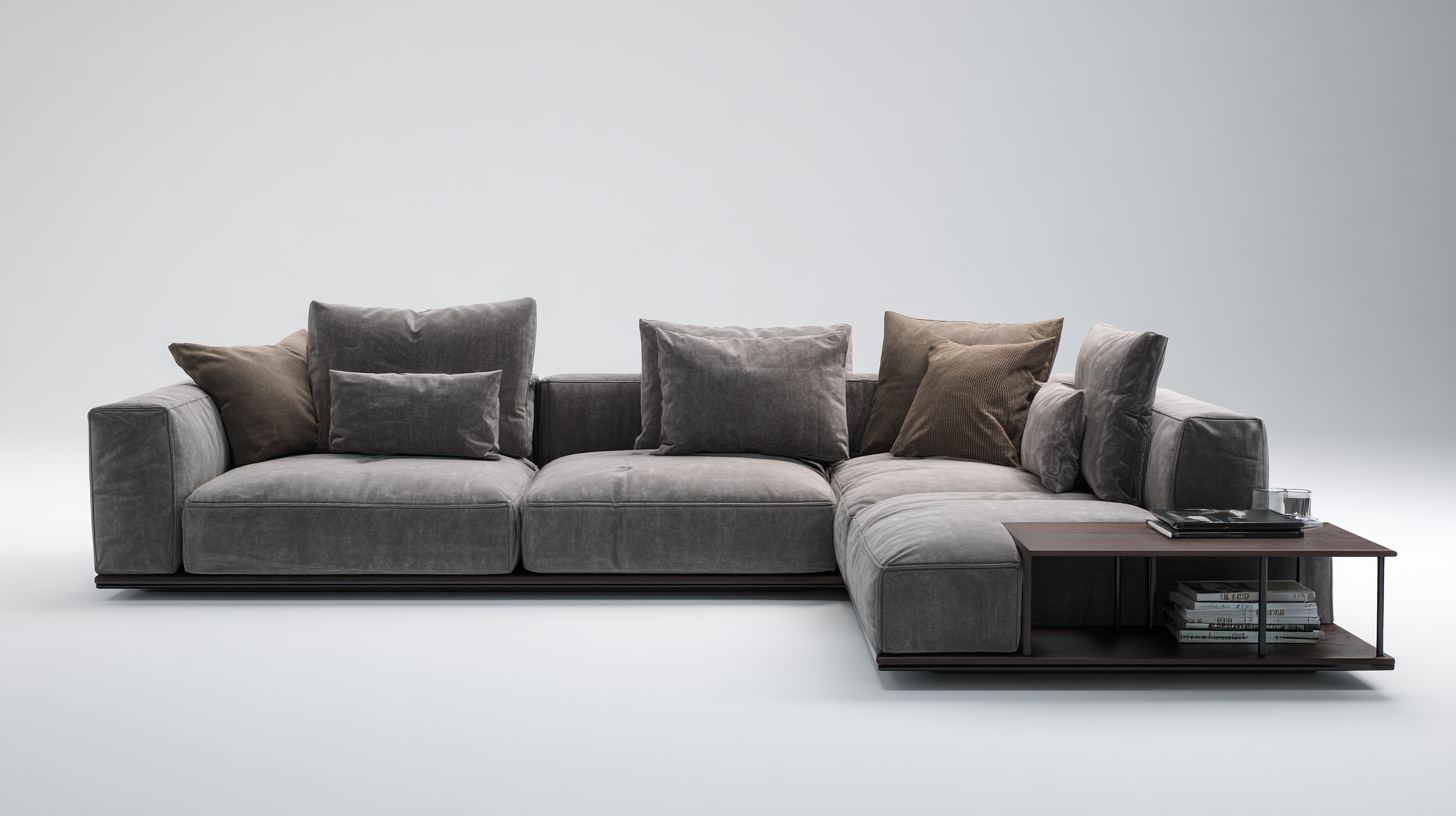Innovative Factory Sofa Designs Transforming Modern Living Spaces with Industry Insights
In today’s rapidly evolving design landscape, the concept of the Factory Sofa has emerged as a transformative element in modern living spaces. Gone are the days when sofas were merely functional pieces of furniture; they now represent innovation and aesthetic evolution driven by industry insights. As urban living continues to adapt to smaller, multifunctional spaces, the demand for stylish yet practical seating solutions has never been higher. This blog will explore how innovative Factory Sofa designs are not just responding to these contemporary needs, but also setting trends that reflect both functionality and elegance. Delving into the latest materials, styles, and production techniques, we will uncover the reasons behind the rising popularity of these sofas and their profound impact on contemporary interior design. Join us as we examine the interplay between creativity and industrial design, showcasing how the Factory Sofa is reshaping the way we live and entertain in our homes.

Innovative Sofa Trends Shaping Modern Living Room Designs in 2023
In 2023, the landscape of modern living room designs is undergoing a significant transformation thanks to innovative sofa trends. One standout trend is the rise of modular sofas, which offer flexibility and customization to suit varying room sizes and layouts. These versatile pieces allow homeowners to rearrange components to create unique seating arrangements, catering to both casual gatherings and formal occasions. With an emphasis on comfort and style, modular designs are perfect for families seeking practicality without compromising aesthetics.
Another trend redefining living spaces is the integration of sustainable materials into sofa designs. As more consumers prioritize eco-friendliness, manufacturers are responding by utilizing recycled fabrics and wood sourced from sustainable forests. This shift not only reduces environmental impact but also adds a modern touch to interiors with organic textures and earthy colors. Coupled with sleek lines and minimalist forms, these eco-conscious sofas are becoming focal points in contemporary living rooms, seamlessly blending style and sustainability.

The Impact of Sustainable Materials on Sofa Design and Consumer Preference
Sustainable materials have become a crucial component in sofa design, drastically shifting consumer preferences in the modern furniture market. A recent report from the World Sustainability Forum highlights that 75% of consumers are more likely to purchase furniture made from eco-friendly materials. This trend aligns with a growing awareness among consumers about the environmental impact of their purchases. Sofas crafted from recycled plastics, organic fabrics, and sustainably sourced woods not only appeal to eco-conscious buyers but also offer a unique aesthetic that enhances contemporary living spaces.

When exploring innovative factory sofa designs, it's important to consider the materials used in production. Look for certifications like FSC (Forest Stewardship Council) for wood and Global Organic Textile Standard (GOTS) for fabrics, which ensure that the materials meet stringent sustainability criteria. Additionally, incorporating modular designs can further reduce waste and accommodate changing consumer needs, allowing for flexibility without sacrificing style or sustainability.
Tip: When selecting a sofa, always check for the manufacturer's commitment to sustainable practices and the lifecycle of the materials used. This not only supports eco-friendly initiatives but often leads to more durable and long-lasting furniture, providing greater value over time.
How Modular Sofas Enhance Flexibility and Functionality in Urban Spaces
The rise of urban living has led to a significant shift in furniture design, with modular sofas emerging as a popular choice for modern spaces. According to the latest report from the American Home Furnishings Alliance, the modular sofa market is projected to grow by 15% annually as urban dwellers seek adaptable solutions that fit their dynamic lifestyles. These sofas offer unparalleled flexibility, allowing users to customize their layout according to the needs of the moment, whether it's entertaining guests or enjoying a quiet evening at home.
Modular sofas not only maximize space but also enhance functionality through innovative designs. Many contemporary models feature integrated storage compartments and convertible elements, making them ideal for smaller apartments. A study by the International Furniture Design Institute highlights that 67% of urban residents prefer versatile furniture that can be reconfigured easily. With options ranging from sectional pieces to additional attachments, modular sofas are redefining how we perceive living room layouts in densely populated areas, facilitating seamless transitions between work, leisure, and social activities.
Innovative Factory Sofa Designs Transforming Modern Living Spaces with Industry Insights
| Design Type | Material | Dimensions (L x W x H) | Flexibility Features | Functionality | Price Range |
|---|---|---|---|---|---|
| Modular Sectional | Fabric | 90 x 35 x 32 in | Adjustable Sections | Convertible to Bed | $800 - $1,200 |
| L-Shaped Sofa | Leather | 85 x 85 x 34 in | Removable Cushions | Storage Compartments | $900 - $1,500 |
| Chaise Lounge | Velvet | 68 x 28 x 30 in | Reversible Design | Relaxation Space | $600 - $900 |
| Sleeper Sofa | Microfiber | 80 x 34 x 32 in | Pull-out Bed | Guest Accommodation | $700 - $1,100 |
| Curved Sofa | Synthetic Leather | 85 x 40 x 34 in | Modular Curved Design | Social Interaction | $1,000 - $1,800 |
Analyzing Consumer Behavior: Preferences in Style and Comfort Features
In today’s evolving market, the demand for innovative home furnishings, particularly sofas, reflects a significant shift in consumer preferences towards comfort and functionality. Recent studies show that over 48% of consumers prioritize comfort and health-focused features in their furniture selections. This trend is driven by a growing awareness of well-being and the integration of ergonomic designs in living spaces, prompting furniture manufacturers to innovate continuously.
Moreover, the seamless underwear market, projected to reach approximately $5.24 billion by 2031 with a compound annual growth rate (CAGR) of 7.98%, underscores the increasing consumer focus on comfort. As consumers increasingly seek out style fused with medical-grade functionality, the furniture industry stands to benefit from aligning their product designs with these emerging preferences. Companies that implement insights from industry reports can capture a significant portion of this market by offering products that marry aesthetics with comfort and support, reflecting a transformative approach to modern living.
The Future of Sofa Designs: Embracing Smart Technology and Connectivity
As modern living spaces evolve, the integration of smart technology in sofa designs is becoming increasingly prominent. According to a recent report by Market Research Future, the global smart sofa market is projected to reach $3.4 billion by 2025, driven by the rising demand for multifunctional furniture that enhances both comfort and convenience. Smart sofas, equipped with features such as USB charging ports, Bluetooth connectivity, and built-in speakers, allow consumers to experience unparalleled functionality, turning a simple piece of furniture into an entertainment hub.
When choosing a smart sofa for your living space, consider these tips: First, assess your space and choose a size that fits comfortably within your area. A well-sized sofa maximizes functionality without overwhelming your room. Secondly, look for customizable features that suit your lifestyle, such as adjustable seating or integrated storage solutions, ensuring that your sofa meets all your needs without compromising style.
Moreover, the trend towards sustainability in furniture design should not be overlooked. The 2022 Sustainability Furniture Report highlighted that 67% of consumers are willing to pay more for eco-friendly materials. Opting for a smart sofa made with sustainable materials can not only enhance your living space with cutting-edge technology but also contribute to a healthier planet.
